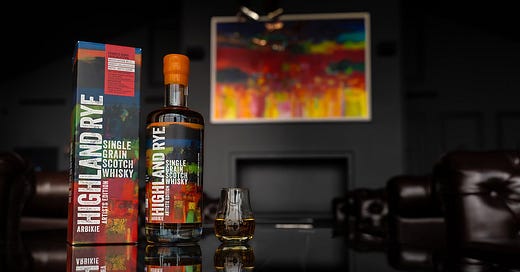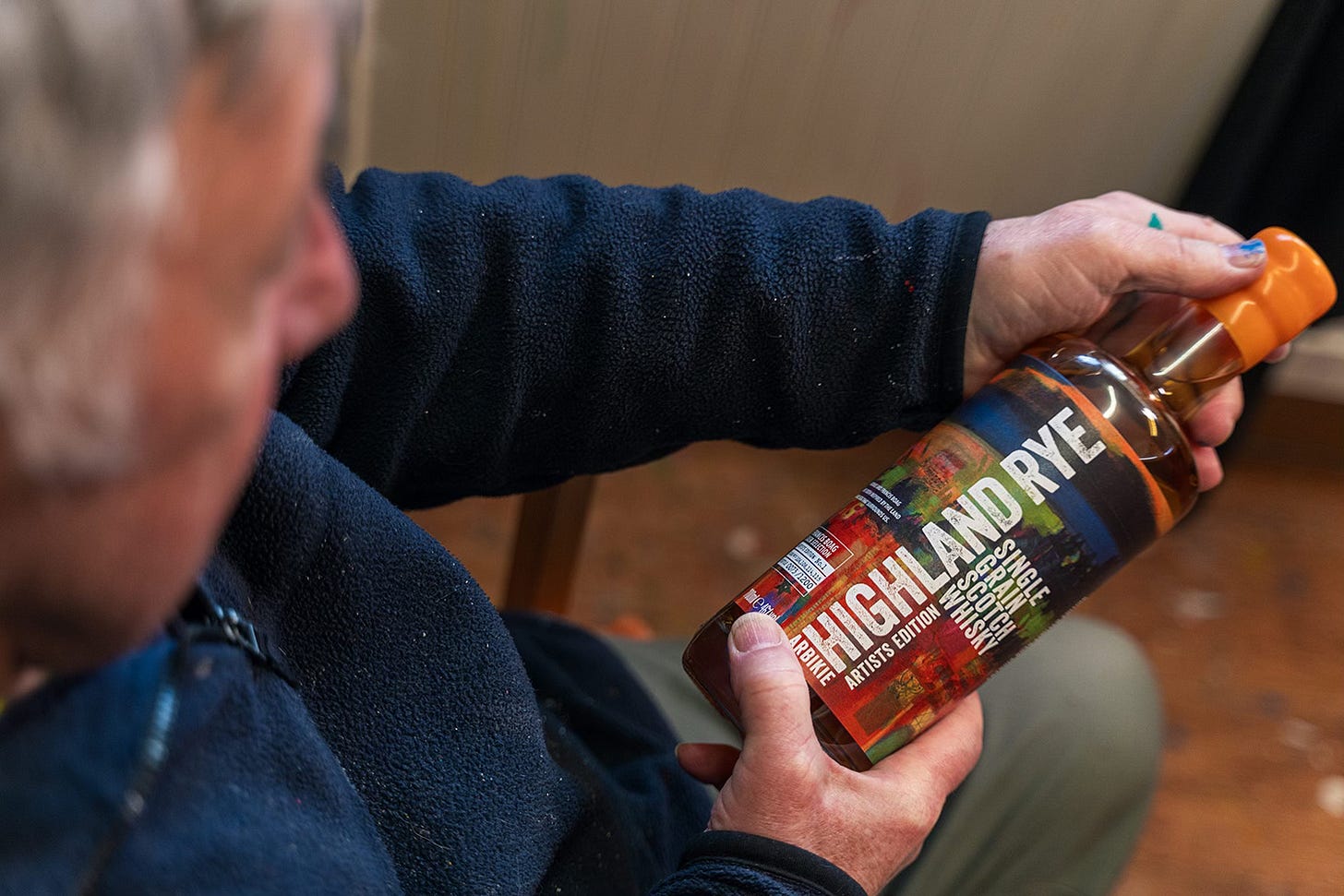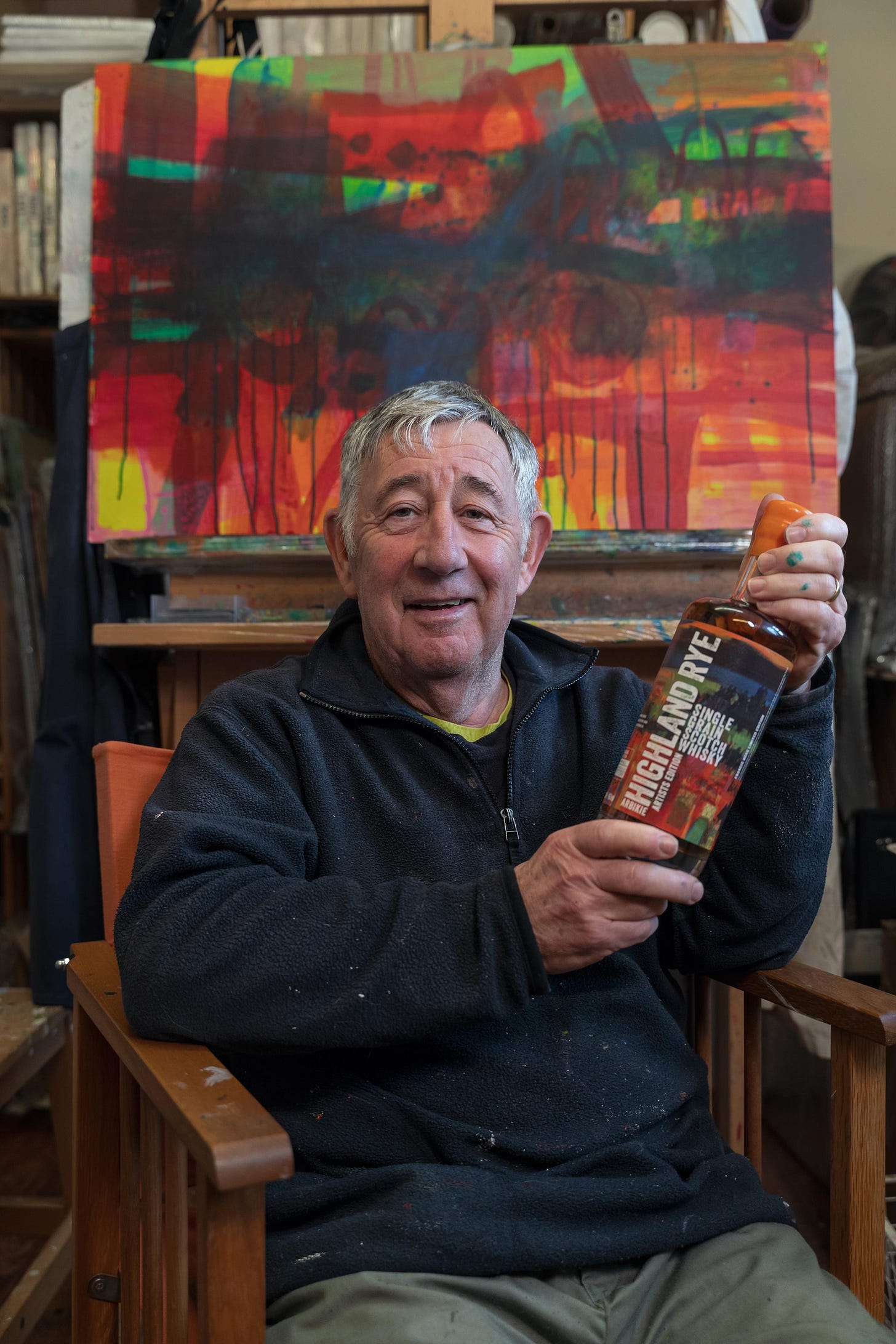The global spirits industry is witnessing a significant shift towards premiumisation, with consumers increasingly seeking out unique, high-quality products with authentic stories. This trend is particularly pronounced in whisky, where there is a growing appreciation for craft spirits that offer something beyond the mainstream offerings. Arbikie’s launch of Scottish rye fits squarely within this narrative.
Arbikie, a fourth-generation family-owned distillery on Scotland's east coast, caught my attention 3 years ago, for its rye whisky. They were the first to make a Rye in Scotland for over 100 years. As a lover of pioneers and rye whisky, together with craft production centred around their family farm, it simply spoke to me.
Rye is traditionally associated with North America, where it became a staple spirit. However, Arbikie’s decision to produce Scottish rye is rooted in both historical precedent and market differentiation. Scotland has a history of rye use in whisky dating back to the 18th century, though it fell out of favour as barley became the grain of choice. By reintroducing rye, Arbikie has tapped into a niche market appealing to those, such as myself, who are seeking something unique.
Sustainability is at the core of Arbikie's production process. The distillery emphasises its "field-to-bottle" approach, with all the rye used for its whisky grown on its own estate. This not only reduces the distillery's carbon footprint by minimising transportation needs but also allows for greater control over the quality and variety of the rye used. Furthermore, Arbikie's commitment to sustainability extends to its packaging and waste management, aligning with a growing consumer demand for environmentally responsible products. They have taken steps to become the World's First Hydrogen-Powered Distillery by installing a 1 MW wind turbine, electrolyser, hydrogen storage and hydrogen boiler system.
The distillery was acknowledged for its commitment to sustainability last year when Berry Bros & Rudd included them in their Pioneers collection of 9 whiskies and 1 Cognac. I was at the launch dinner and can attest to just how good it was. Pioneer is exactly the correct term to use, as Kirsty Black, their Master Distiller and former plant scientist, has created Nàdar. This is the world’s first climate-positive spirit, made from peas and reduces CO2 in each 700ml bottle by a massive 1.53kg. You can view an excellent film about what Kirsty and the team are doing at
The distillery uses a combination of rye, barley and wheat, fermenting and distilling the grains in a way that maximises flavour extraction. This process is more labour-intensive and requires more expertise than that used for traditional Scotch. A 100% rye would be too much, so it is tempered with the Scottish wheat and barley, both also grown on the estate or within arms reach of it. In addition, they also release a small batch of whisky, finished in a variety of casks, as per my tasting notes below.
The launch of Arbikie’s rye must come with challenges, including navigating the strict regulations governing Scotch whisky. Additionally, educating consumers about Scottish rye and establishing it as a distinct category requires significant effort and marketing resources. I am certainly happy to help, by sharing with you just how delicious it is.
These challenges also present opportunities. Arbikie’s rye whisky strengthens Scotland’s reputation as a leader in the whisky industry, showcasing its capacity for innovation within traditional frameworks. Moreover, Arbikie’s emphasis on sustainability and local production resonates with contemporary consumer values, potentially attracting a broader customer base beyond traditional whisky enthusiasts.
Arbikie Artists Edition No 1 Francis Boag - 46%
Francis Boag is a Scottish artist known for his vibrant and expressive paintings, which capture the beauty of the Scottish landscape and beyond through a distinctive use of colour and texture. Born in Dundee, Scotland, in 1948, Boag's journey into the art world was somewhat unconventional. He initially pursued a career in education, working as a head teacher before deciding to dedicate himself fully to painting in the late 1990s
Boag's work is characterised by a bold palette, with an emphasis on vivid, often unexpected colour combinations that bring a dynamic energy to traditional scenes. He employs a range of techniques to create texture and depth, from thick impasto to delicate brushwork, which together convey a sense of movement and light. His landscapes are not mere representations but rather interpretations, where the essence of a place is distilled through colour and form.
After leaving his teaching career, Boag rapidly gained recognition in the Scottish art scene and beyond. His paintings have been exhibited widely across the UK and in international galleries, appealing to a broad audience with their joyful and immersive qualities. Boag cites the influence of French Fauvism and Scottish Colourists in his work, and his paintings do echo the Fauvist celebration of colour as an emotional force and the Colourists' interest in capturing the unique light and mood of a scene.
In addition to landscapes, Boag's portfolio includes still lifes and abstract compositions, though all are marked by his signature style of expressive colouration and a joyful exploration of the visual world. His work has been collected by both private and corporate clients, and he has received several commissions and awards throughout his career.
One of these commissions was from Arbikie to create a piece depicting the view from the distillery towards Lunan Bay and the Red Castle. This has now been made into a limited edition print and adorns the label and outer box of a limited edition of 1200 bottles of Arbikie. This special edition has been drawn from 4 casks aged in American oak and then finished in Calvados barrels. This has provided a lovely sweetness and you can pick out the apple influence which works very well with the rye, and its spice. In many ways it gave me hints of an apple crumble with cinnamon ice cream. It really is delicious!
Christian Perez, the Production Manager Arbikie Distillery said about this whisky:-
"Francis Boag’s approach is to experiment with light and shade, using bold and vibrant colours with broad-brush strokes, this technique connects the foreground with the background revealing the meaning of the art. Similarly, our inspiration on Boag’s technique catapulted our imagination and creativity to use Calvados casks to exhibit the aromas of caramelised apples in the foreground connecting with the bold and spicy character of our Highland Rye in the background. A symphony of affinity and contrast."
Francis Boag also commented:- ‘I guess you could call it alchemy in a way, you are turning base materials into gold. No expense or value goes into a painting. It is simple, water, paint, pigment, the use of a brush and hopefully through these simple elements you can create a complex thing of beauty. My work is unique in the same way as the whisky will be.’
I applaud distilleries that collaborate with artists and offer a limited edition print. It serves as a visual reminder of the times spent with friends enjoying the bottle, in addition to having a beautiful piece of art work.
Arbikie Distillers Edition No1 Cask Strength - 59.7%
This has been bottled at a robust 59.7% ABV and gives an unadulterated taste of the characteristic of Arbikie. It is a deep amber colour with an intense and inviting aroma, with initial notes of dark fruits, such as plums and cherries with a vanilla undertone. As it opens there is cinnamon and nutmeg with a touch of orange.
The whisky is powerful yet balanced. The high ABV delivers an initial warmth that reveals dark chocolate alongside dried fruit. On the mid-palate, you really feel the spice and oak with a touch of citrus zest. This is a bold and complex whisky that I love.
As Arbikie’s continues to make its mark on the industry, it raises questions about the future direction of Scotch whisky. The distillery’s success could pave the way for other producers to explore forgotten grains, potentially leading to a broader diversification of the Scotch whisky category. This evolution would not only cater to the growing demand for craft and premium spirits but also reinforce Scotland’s position as a leader in the global spirits industry. I do fear that the Scotch Whisky Association may be rather like an oil tanker trying to dramatically change direction.
The Francis Boag expression is available from Arbikie at £250.






